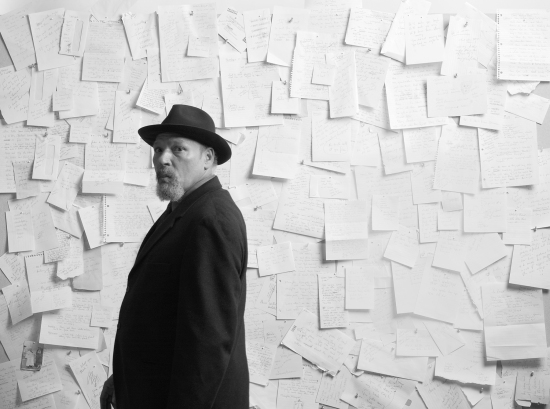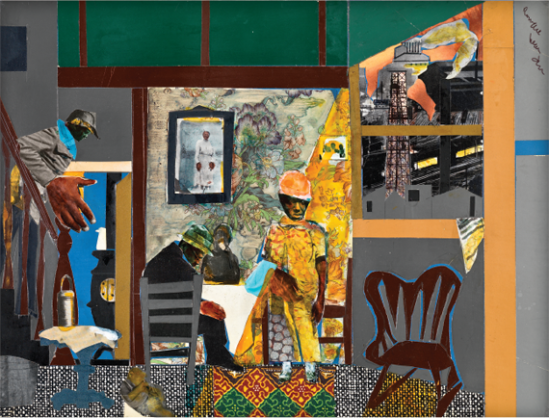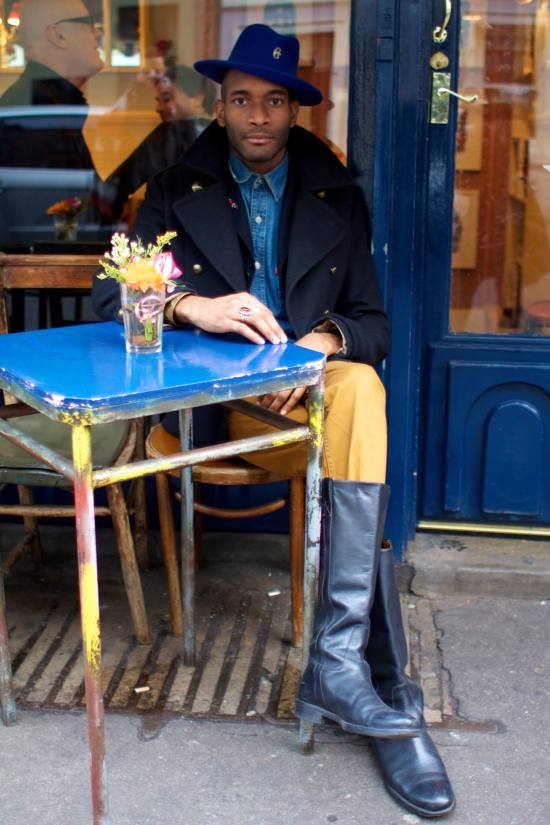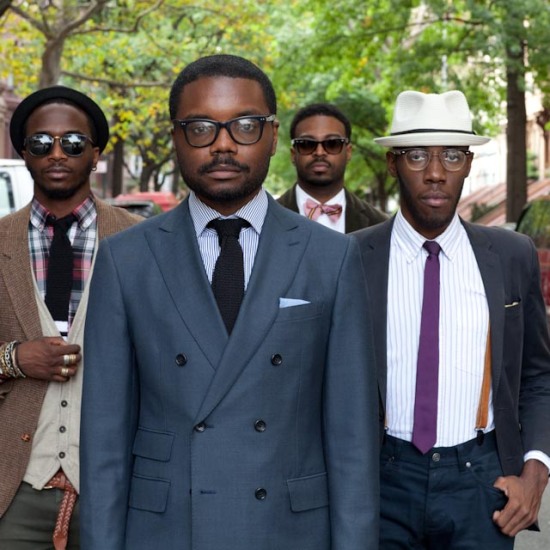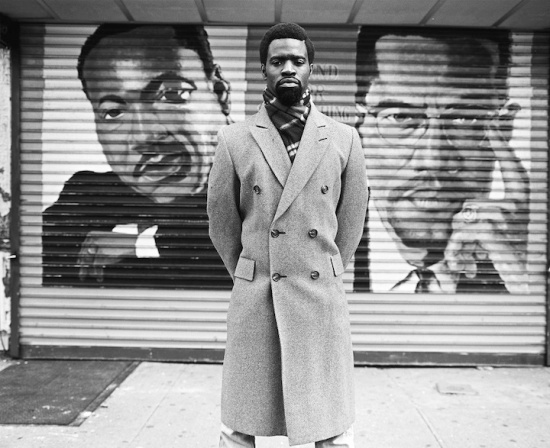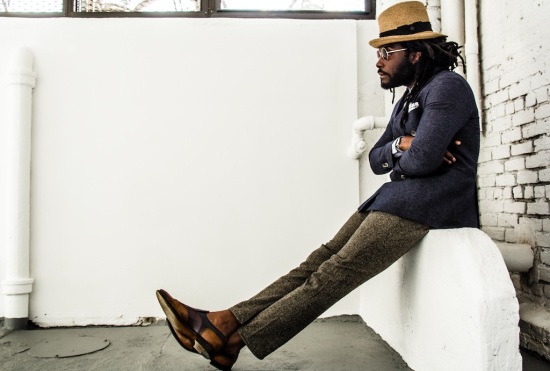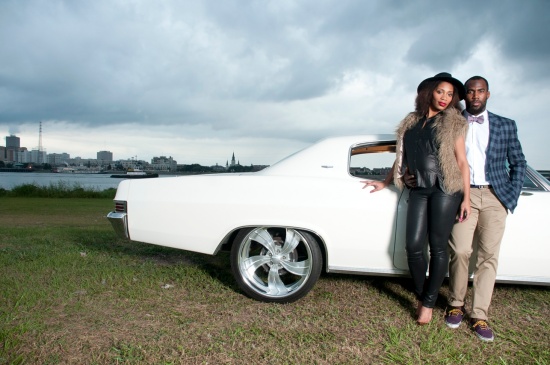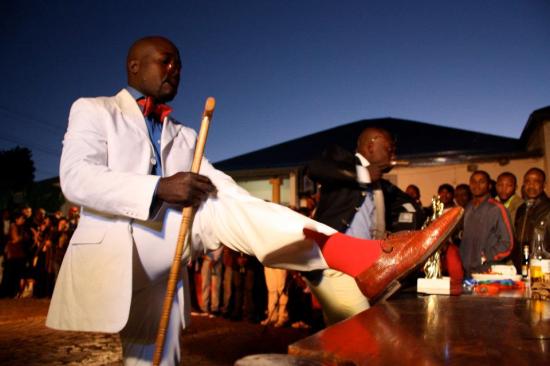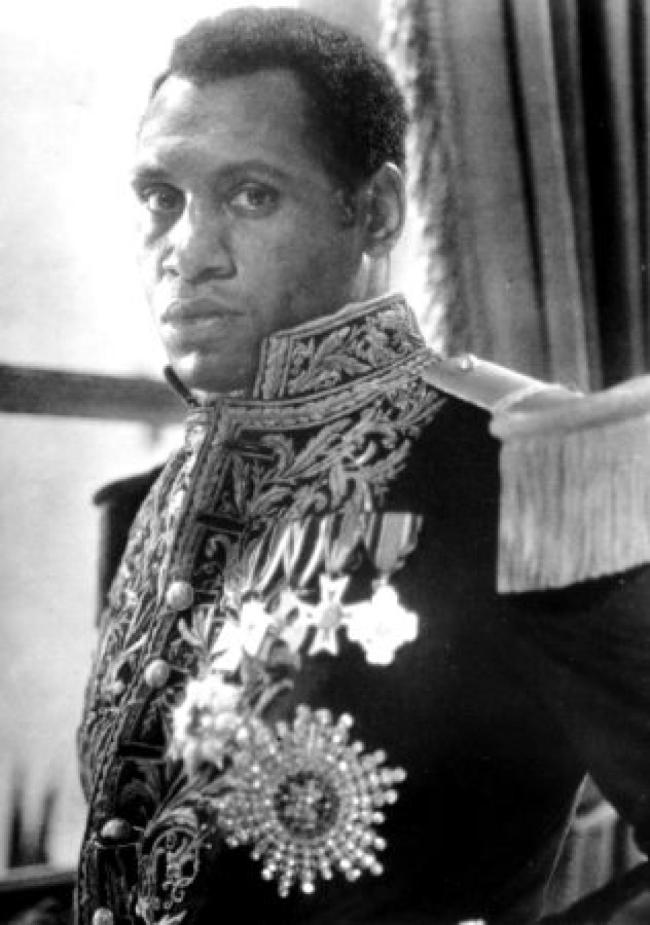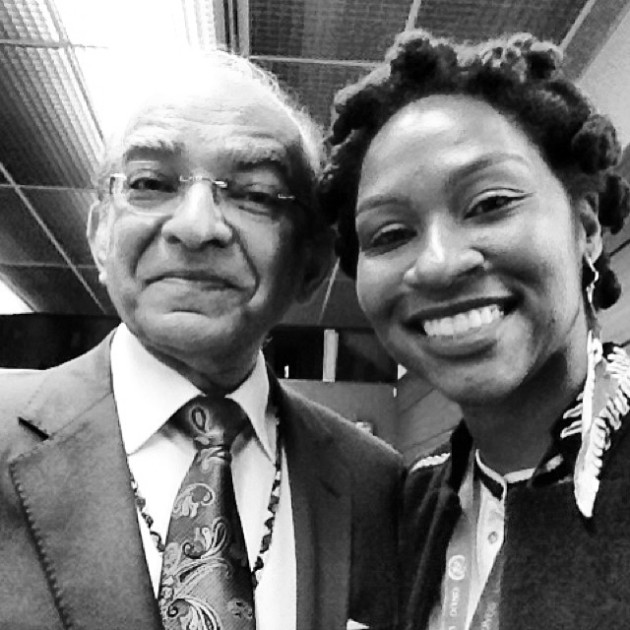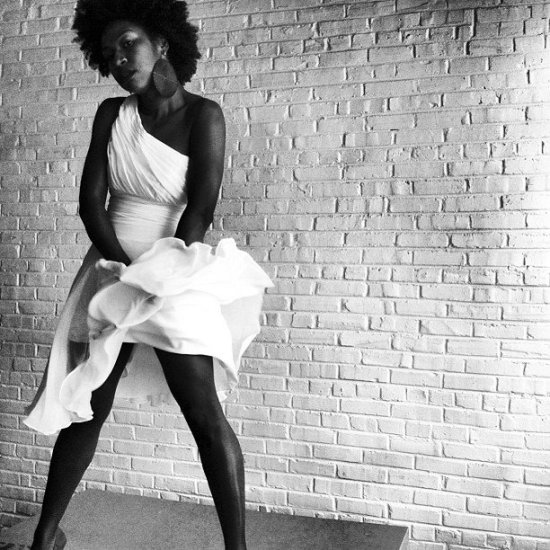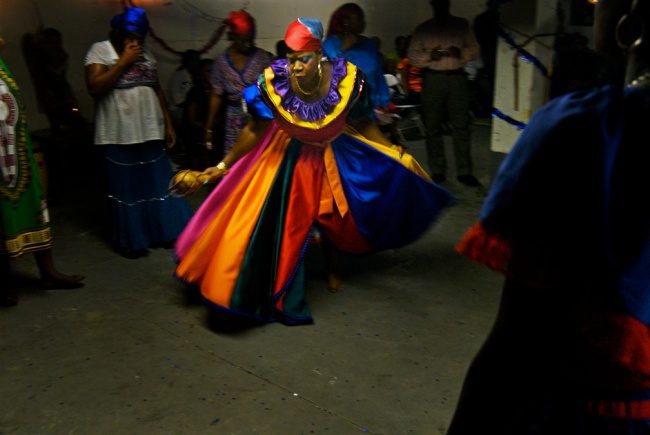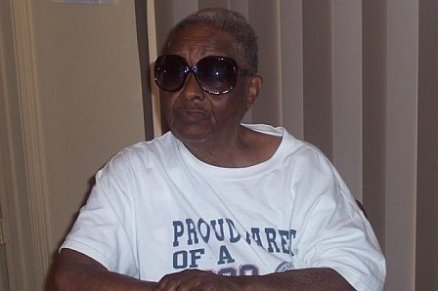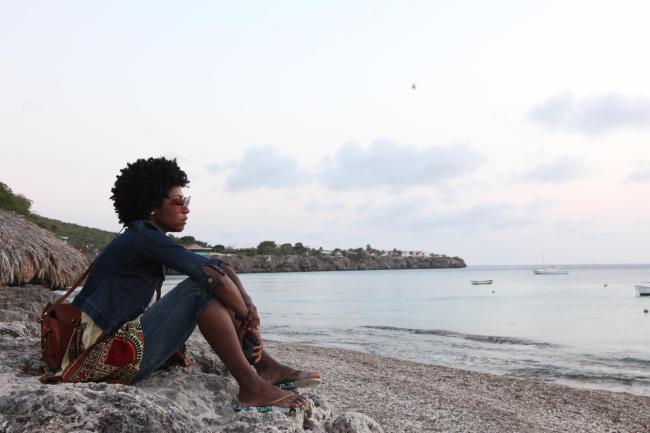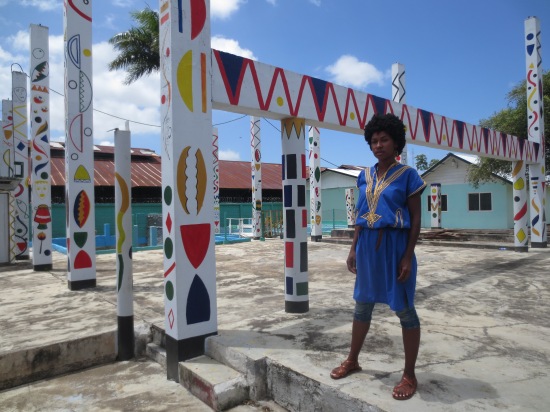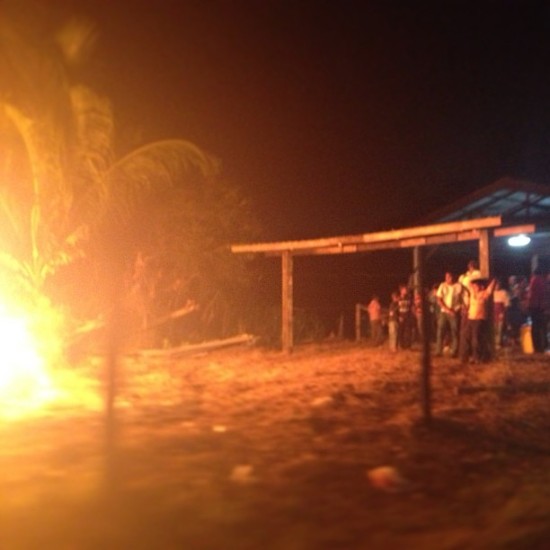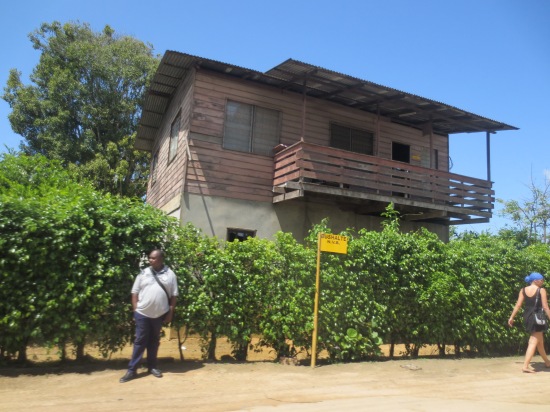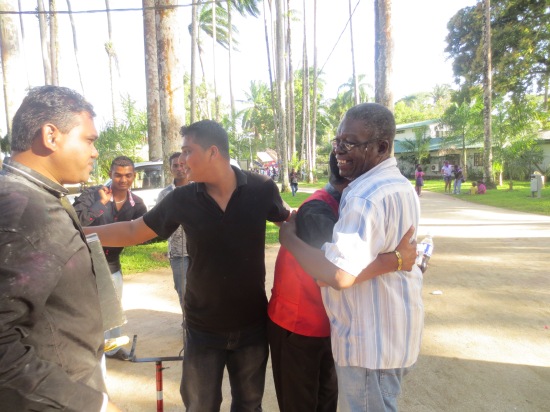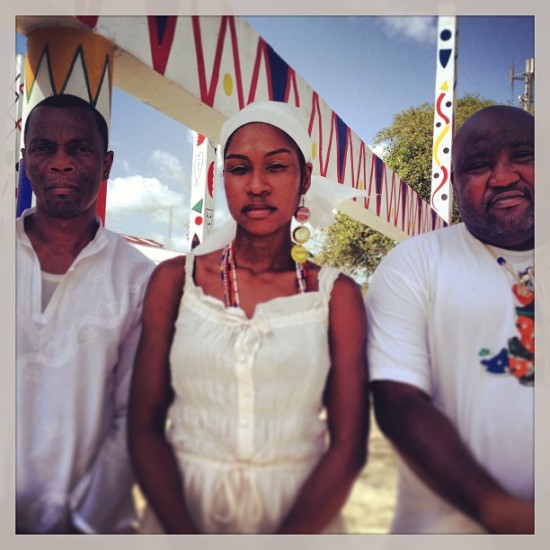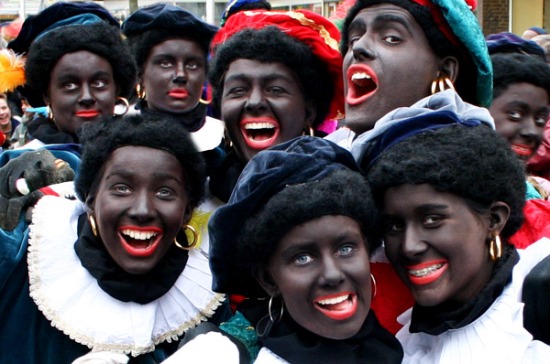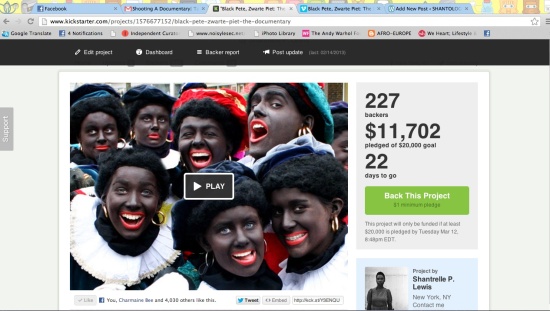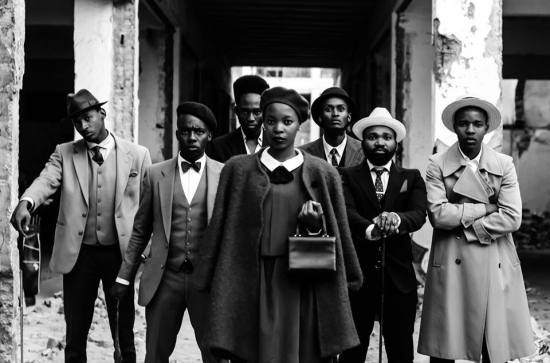
Khumbula | Johannesburg, South Africa | Photo Credit: Harness Hamese & Lukas Amakali | Compliments of Loux the Vintage Guru
Four years ago, when Ngozi Odita (Society HAE/Afrika21/Social Media Week Lagos) asked me to curate an exhibition at her pop up gallery in Harlem, I had no idea at the time that I was foreshadowing a subcultural movement that was on a resurgent rise across the globe. That one exhibit has evolved into the most comprehensive multi-media survey of global Black Dandyism to date. Over the past four years, the exhibition has traveled to notable institutions including the Museum of Contemporary African Diasporan Arts (Brooklyn, NY); Aljira, A Center for Contemporary Art (Newark, NJ); the Reginald F. Lewis Museum of Maryland African American History & Culture(Baltimore, MD); and Open Ateliers Zuidoost in (Amsterdam, NL). Additionally, it has served as a platform for scholarship and academic discourse both here and abroad, including panels and lectures featuring Dr. Monica Miller, author of Slaves to Fashion.
As the project expands and connect with the contemporary connoisseurs of this phenomenon, I continuously marvel at the historical images I meet at the crossroads of time, space and style. Men of African descent were dandy and fine well before fine and dandy was even a “thing” by Europeans or anyone else for that matter.
Here’s to rebellious Black men around the world, whose sartorial decisions are challenging mainstream narratives of Black masculinity, creating a space for elaboration on elegance and allowing a moment for us to indulge in collective nostalgia. For those of you who have supported since Day 1, thank you. And to everyone just hopping on…buckle up and enjoy the ride. Cheers!
The Bow Tie Business

After spending so much time surrounded by dapper men and constantly reviewing images of the Diaspora’s best dressed, it was only a matter of time before the “fashion” bug bit me. Well more like the design bug. This Fall I’ll be launching my attempts to create a physical, wearable manifestation of The Dandy Lion Project. Look out for William + James…coming to a haberdashery near you. The line will represent a marriage between the charming aesthetics and revolutionary philosophies of William Edward Burghardt du Bois and James Baldwin. Want to be added to the select list of VID (Very Important Dandies) to learn about the launch before we launch? Email me at thedandylionproject@gmail.com and put William + James in the subject line.
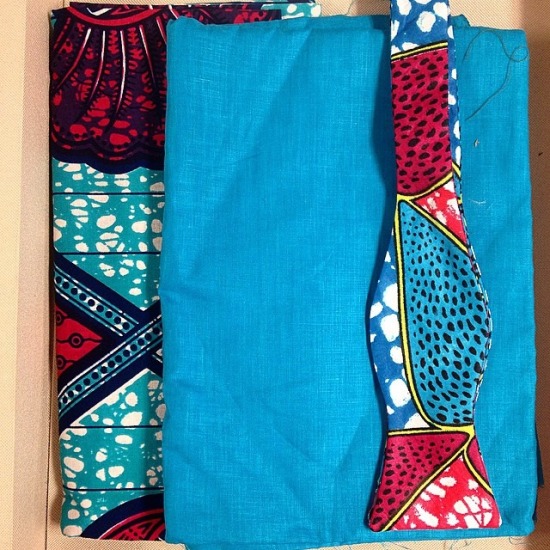
William + James | Coming Soon.
Documentary for CANAL PLUS (France)
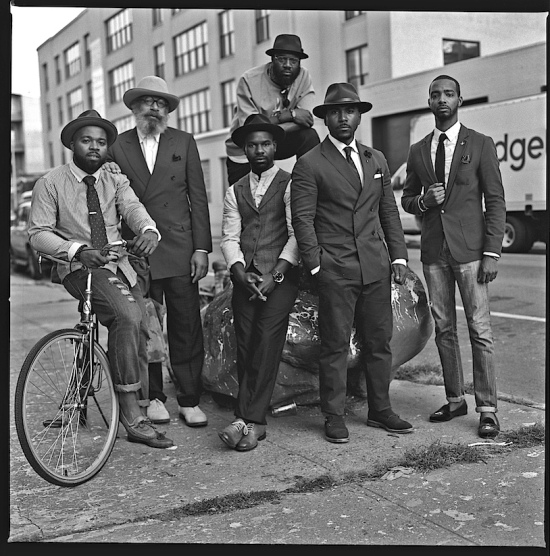
Photographer: Russell K. Frederick | Brooklyn, NY
A few months ago, I was contacted by Laurent Lunetta, a Parisian filmmaker who wanted to interview me about The Dandy Lion Project during NYFW for a documentary on Black Dandyism to be aired on Canal Plus (FR). To help organized the shoot, I contacted my frat brother (Shout out to the Ques!) Barnabas Crosby, co-founder of Whiskey Boys. In typical Coleman Love fashion, we made magic. Special thanks to Ali of a Noble Savage, who most graciously invited us to his Brooklyn chateau (read loft) for the afternoon.
To document participate in the actual shoot, I called one of my right hands, Russell K. Frederick. I couldn’t have cooked up a more dynamic environment or conversation even if I wanted to. The shoot was incredible. The brothers who rolled through included Barnabas Crosby, Ignacio Quiles, Kevin Gray, Mike Barnett, Robert “Max” Twitty and Kenard Bunkley. Can’t wait to see the finished product.
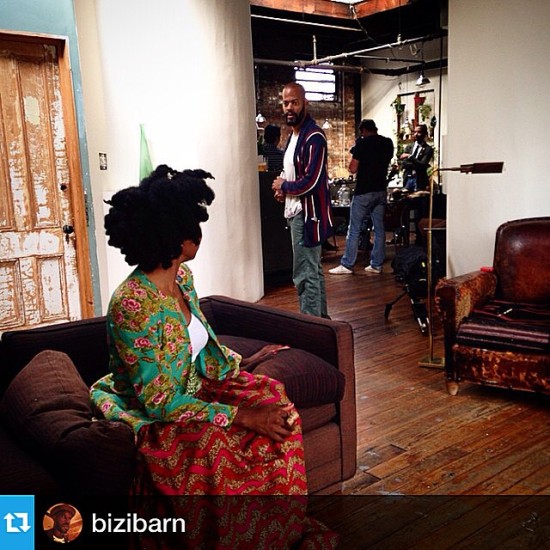
Shantrelle P. Lewis and Ali of a Noble Savage | A Noble Savage
African Street Style Festival in the Streets of London, U.K.
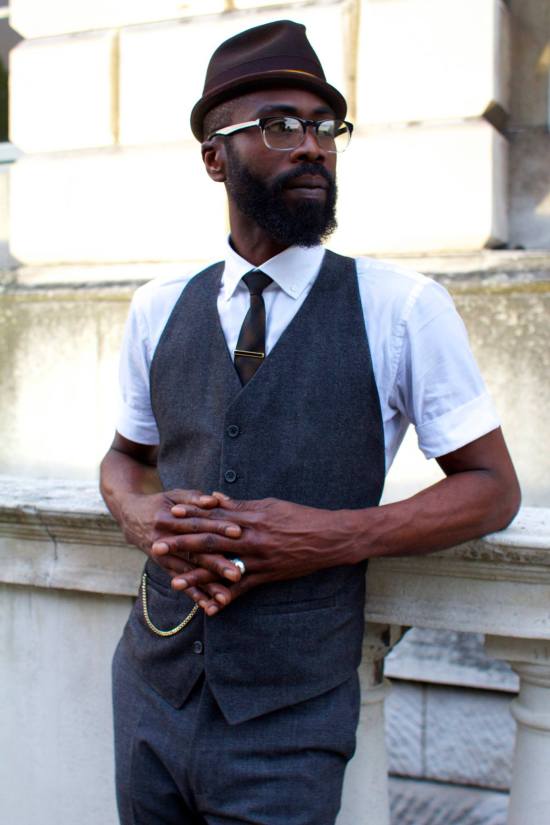
Samuel Seth Mingle | Photo Credit: Sara Shamsavari
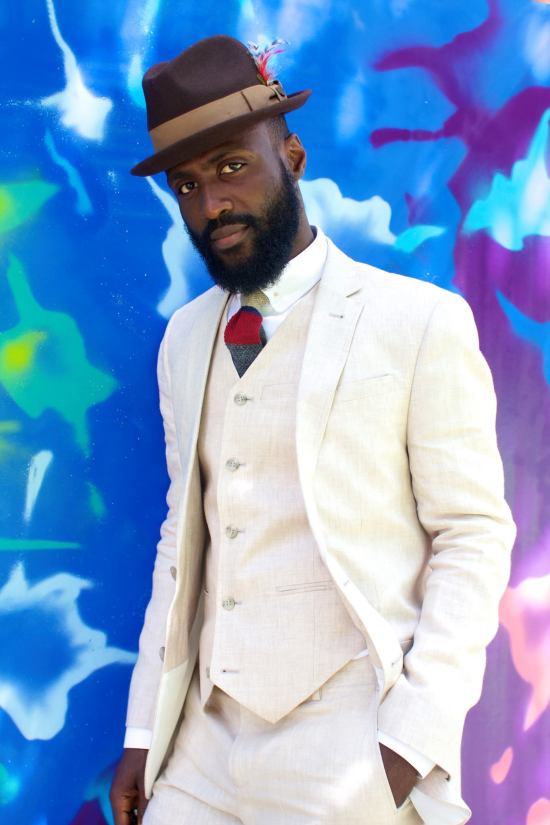
Kevin Kittoe | African Street Style Festival | Photo Credit: Sara Shamsavari
This summer, British-Iranian artist Sara Shamsavari was invited by the producers of African Street Style Festival to create London’s first Dandy Lion Portrait Session. Some of London Town’s finest came out to represent for the Black Brits. It’s no wonder that England gave birth to the phenomenon that is traditional dandyism.
Sara has garnered international attention for her series on veiled women in London and Paris. I’m so excited to add her to our magnificent roster of artists. Special thanks to Jeff Lennon for the invitation and James Maiki for producing this amazing video! Shout out to all of the gentlemen who lent their energy, their philosophies and and those [British accent] voices.
Click here to watch the Dandy Lion Portrait Session at the African Sreet Style Festival
SAVE THE DATE
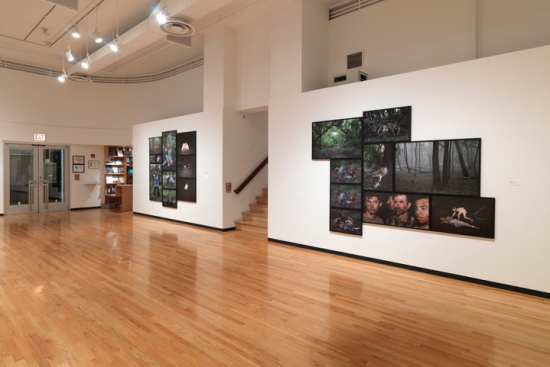
Museum of Contemporary Photography | Chicago, IL
Dandy Lion: (Re)Articulating Black Masculinity
Museum of Contemporary Photography | Chicago, IL
April 2 through July 15, 2015
Slated to be the largest iteration of Dandy Lion: (Re)Articulating Black Masculinity to date, a host of internationally and nationally recognized photographers and filmmakers have been added to the roster of artists including Baudoin Mouanda, Daniele Tamagni, Rose Callahan, Sara Shamsavari, Arteh Odidja, Richard Terborg, Numa Perrier, Allison Janae Hamilton, Rog Walker and L. Kasimu Harris. Start making reservations to join us in Chicago and thank me later.
To give you a taste of some of the newest additions to the exhibit…
ARTEH ODIDJA | London, United Kingdom
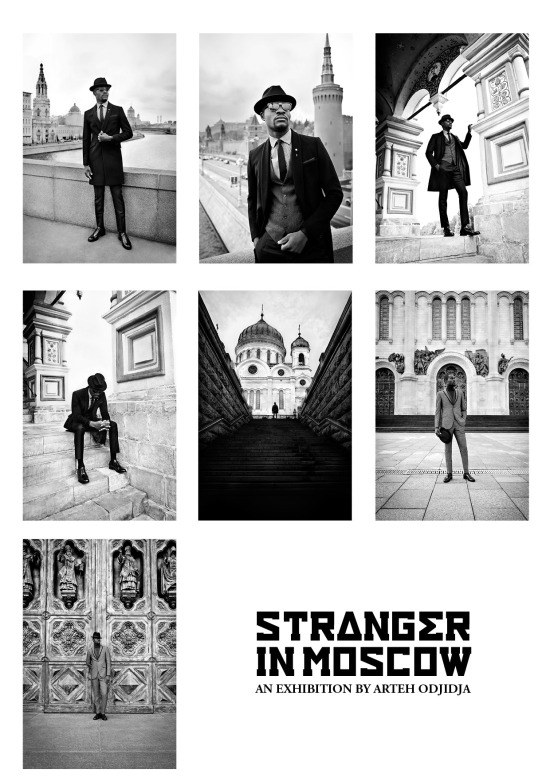
Stranger in Moscow | Photo Credit: Arteh Odidja
Last summer, U.K. based photographer Arteh Odidja’s Stranger in Moscow exhibit opened at Ozwald Boateng’s flagship store on London’s historic Savile Row. Despite missing the show during my last trip on the other side of the pond, my British network enabled me to connect with Arteh and invite him to participate in Dandy Lion. Needless to say, he said yes.
Hear Arteh in his own words here. | Follow him on Instagram.
BAUDOIN MOUANDA | Brazzaville, Congo
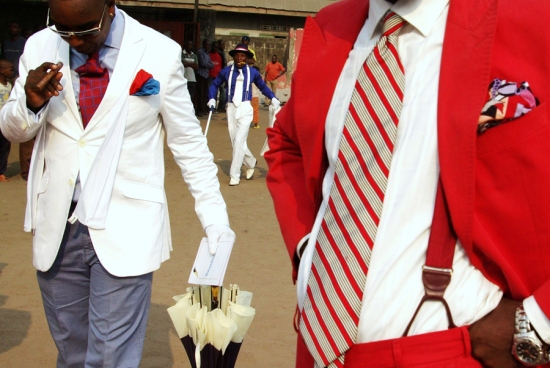
La S.A.P.E. | Photo Credit: Baudouin Mouanda
Baudoin Mouanda is a young, award-winning photographer from Brazzavaille. His images of the Congo’s sapeurs have been shown around the world and received critical acclaim. I’ve been following his work and anxious to include his images in the show. for a few years now. It was important for me to include the voice of someone who can express the stories of his own people as opposed to merely showing the images of sapeurs from an outsider’s view. He also said yes. We will be able to see La S.A.P.E. through the eyes of one of their own brethren. Special thanks to Daphne Kolader and Alexis Peskine for all of their translation assistance.
Read more about Baudoin’s critically acclaimed work and listen to him here.
LOUX the VINTAGE GURU | Namibia
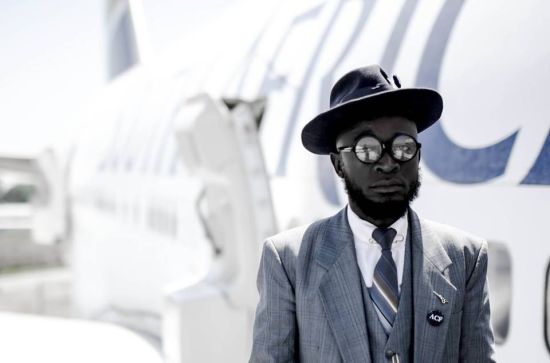
Loux the Vintage Guru | Photo Credit: Harness Hamese & Lukas Amakali
Several months ago, multiple friends posted a link on my timeline. It was the profile of a handsome, bearded gentleman donning vintage suits in Southern Africa. Hailing from Windhoek, Namibia’s capital city, Loux the Vintage Guru is rapidly becoming to the Continent what Street Etiquette is to the U.S. and Art Comes First is to western Europe. A sequence of features in major international publications followed that initial post and Loux and his co-compadres are now the faces of a fresh movement of a classic era in post-Independent Africa.
As of today, Loux and the Love is African Collective, have been added to the growing roster of esteem style gurus featured in The Dandy Lion Project. Between their photographs and Jim Naughten’s stunning images floating around of Herero women in traditional colonial dresses with cattle headpieces, I think I found my next new destination on the Continent. Travel Noire soiree in Namibia anyone? S/O to photographers Harness Hamese and Lukas Amakali for their stunning images.
Read more about Loux’s philosophy here. | Follow Loux the Vintage Guru on Instagram.
ROSE CALLAHAN | NEW YORK CITY
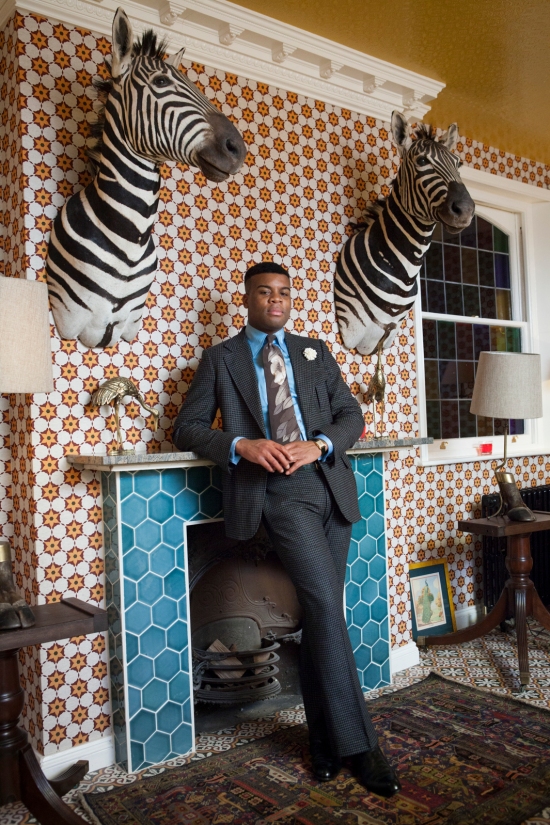
Barima Owusu-Nyantekyi, London, 2013 | Photo Credit: Rose Callahan
Rose Callahan and her writing partner, Nathaniel “Natty” Adams, have made quite a name for themselves with their collaborative effort – I Am Dandy: The Return of the Elegant Gentleman. They don’t just capture the well-dressed, their portraits and interviews are a documentation of exquisite gentlemen from around the world for whom dandyism is not just a closet of nice clothes but a lifestyle. Rose and I first met during the opening reception of Dandy Lion‘s inaugural show. We’ve followed each other’s work since. I’m so thrilled to finally formally work with her through our shared love of the well-dressed.
Check out a recent feature on I Am Dandy Here. | Follow The Dandy Portraits Blog Here. | Order a copy of the book here.
Collecting Vintage Images
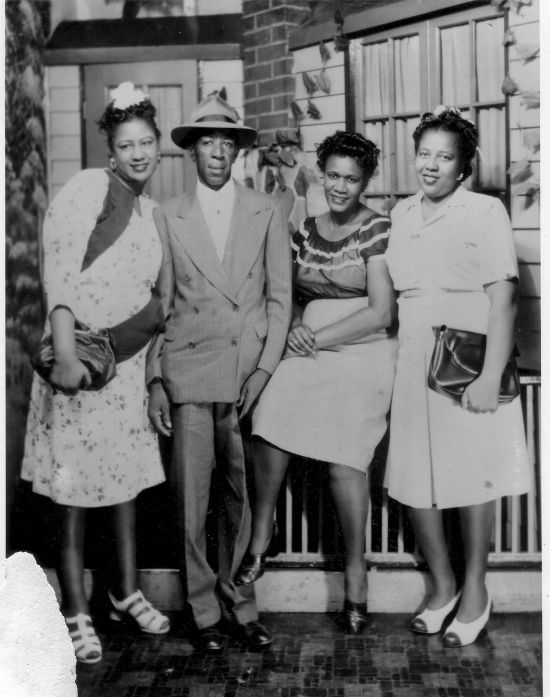
Mr. Ulysses Brooks and his cousins ca. 1930s | Submitted by: Deborah Singletary
I’m still collecting vintage family photos of men of African descent from around the world (that includes Afro-Latinos and South Americans) for the forthcoming publication of Dandy Lion with BlackPrint Press. I’m especially interested in images from Brasil, Nigeria or anywhere in Africa for that matter, London and the Caribbean. If your grandfather, uncle or dad was dapper, please give him some shine and send over his photo!
GUIDELINES
NOTE: Write your name and VINTAGE DANDY LION in SUBJECT LINE of the email.
EMAIL | thedandylionproject@gmail.com
1. Please submit a hi-res scan of the image. The scan should at be at least 300dpi. Please do not send a photocopied image or a scan of a photocopied image. Only scans of original photographs will be considered.
2. Details about the Dandy Lion: Please include the following information:
Name(s) of anyone pictured in the photograph
Location of the photo
Approximate date (Year is sufficient)
Name of photographer (if available)
3. Name of the individual who owns the photograph (for appropriate credit).
4. Please include personal information about the photograph’s subject(s): personal interests, birthplace, occupation, pastimes, personality, etc…
5. Submissions from institutions and organizations will also be accepted with appropriate signed releases for use.
GET DAILY INSPIRATION AND FOLLOW US ON FACEBOOK

Barbershop Ad | Francophone West Africa ca. 1960s
